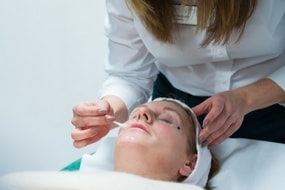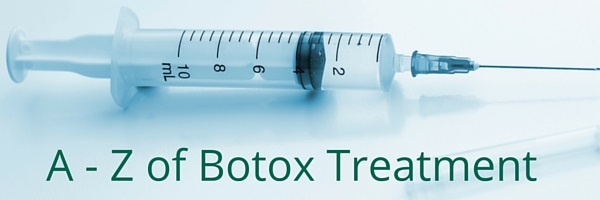
Anti-wrinkle injections, commonly known as Botox® injections can be used to reduce the appearance of lines on your face including frown lines, crow’s feet and forehead lines.
If you’re considering anti-wrinkle injections but want more information our A-Z of Botox will help to answer some of those questions:
Aftercare
Aftercare is important in order to get the best results from your botox® treatment. It is advised that after the first 30-60 mins after having botox you move your facial muscles regularly, smile a lot! Take it easy, get comfy in front of the TV or why not catch up on that book you have been meaning to read. You will need to remain upright and avoid touching or applying pressure to the area. For the next 24 hours Avoid any strenuous exercise and any hot baths or saunas. Any swelling after treatment is completely normal and can be helped with ice, and any slight bruising can be helped with Arnica gel.
Botulinum Toxin Type A | A-Z of Botox
Botulinum toxin type A is a protein more commonly known as Botox® which is actually a brand name just like Bocouture, Azzalure, Dysport and Xeomin. Botox® is made from the bacteria that cause botulism. Botulinum toxin type A works by blocking the nerve activity in muscles which causes a temporary reduction in muscle activity.
Consultations | A-Z of Botox
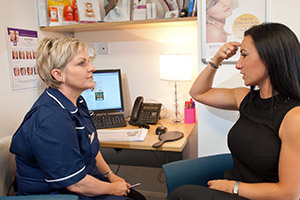 Consultations before Botox® are essential. Everyone’s face is different so what your sister’s best friend got is going to be different to what is suitable for you. Once you arrive at your consultation you will meet your practitioner and you will be able to discuss areas of concern to you. Your practitioner will also go through the possible complications of botox the common of these include swelling, bruising, headaches, and redness at injection site, everything will be discussed in detail and you will also be able to ask any questions before deciding to go ahead or not.
Consultations before Botox® are essential. Everyone’s face is different so what your sister’s best friend got is going to be different to what is suitable for you. Once you arrive at your consultation you will meet your practitioner and you will be able to discuss areas of concern to you. Your practitioner will also go through the possible complications of botox the common of these include swelling, bruising, headaches, and redness at injection site, everything will be discussed in detail and you will also be able to ask any questions before deciding to go ahead or not.
Don’t Drink | A-Z of Botox
It is highly recommended to avoid drinking alcohol 24 hours before and 24 hours after having received the botox® treatment. Not drinking will minimize the likelihood of side effects and reactions. Droopiness is a side effect of botox® especially in the eyelids or eyebrows which can happen when botox® is injected too low, too deep or even too much, always get your botox® done by an experienced medical professional for the best results.
Eyes | A-Z of Botox
Eyes are a common area that people have concerns over and look to botox for help. It is so important that you look a professional practitioner for all treatments of botox® but especially for any treatment that involves injecting around the eye to avoid any un-wanted side effects. Botox® can be injected into the periorbital area to lift tired eyes giving a fresh faced look.
Frozen Face | A-Z of Botox
Frozen Face is a common misconception about having a botox treatment. If done correctly, botox® should not leave you with a frozen face and you should be able to regain natural movement. Make sure you research your practitioners understand that you may not reach your desired effect until after at least 2-3 treatments. Unfortunately if you do end up with a frozen face then the only cure is time, and you will have to wait for it to wear off.
Gummy Smile | A-Z of Botox
Gummy Smile is a phenomenon which causes the upper lip too rises too far above the upper teeth, exposing gums when you smile. If you are hiding away a gummy smile then all is not lost! A small amount of botox® can be injected at the junction of nostrils and nose to mouth fold to relax the hyperactive muscle which causes the lift.
Hyperhidrosis | A-Z of Botox
Hyperhidrosis is actually a common condition where a person sweats excessively. Botox® is licensed in the UK for treating localised products hyperhidrosis in the armpits, it works by blocking the nerves that supply the eccrine glands which then prevents the glands from producing sweat. It is important to remember however that this is not a cure for hyperhidrosis, your nerve endings do return to normal and the sweating will gradually return, at this point you should go back to your practitioner to receive the treatment again. Hyperhidrosis treatment would be suitable for hands, faces and hairline.
Injections | A-Z of Botox
Botox® despite its powdered initial form is an injectable. It is also rarely just a single injection and will generally consist of a series of injections to the upper face although this varies depending on your treatment type. Patients can be pre-treated with a topical aesthetic before treatment which makes them virtually painless. The needle itself is small and each injection is very quick and therefore the discomfort, if any, is over very quickly.
Jowls | A-Z of Botox
Jowls are a natural part of ageing. As your skin starts to lose elasticity you may notice the lower part of your face such as your cheek and jaw areas begin to sag down. Although it is not a common use of the anti-wrinkle treatment because botox targets the muscle you can focus it on to the muscle in your neck that causes wrinkling, sagging and a jowl-like appearance in this area. Using botox® to relax this muscle means that the sagging is reduced.
Knowledge is king | A-Z of Botox
Knowledge is king! Before getting any treatment, especially an injectable like botox® it is always important to do your research and make sure you fully understand the process involved and the recommended aftercare advice. If you are unsure of anything make sure you make a note of the question and ask your practitioner at your consultation.
Licenced | A-Z of Botox
 Botox® in the UK is classed a prescription only medicine which means it can only officially be prescribed by a doctor, dentist or independent nurse prescriber. The prescriber will take liability for the administration of the drug under their supervision. The liability for patient safety rests with the prescriber. Always ask to see a GMC, (General Medical Council) NMC (Nursing and Midwifery Council) or GDC (General Dental Council) registration before letting your practitioner start botox treatment.
Botox® in the UK is classed a prescription only medicine which means it can only officially be prescribed by a doctor, dentist or independent nurse prescriber. The prescriber will take liability for the administration of the drug under their supervision. The liability for patient safety rests with the prescriber. Always ask to see a GMC, (General Medical Council) NMC (Nursing and Midwifery Council) or GDC (General Dental Council) registration before letting your practitioner start botox treatment.
Migraines | A-Z of Botox
Migraines are quite severe headaches which effects on average 1 in 7 people in the UK. But did you know that botox® is reported to be an effective treatment option for adults who suffer with chronic migraines. Although the exact reason why it works is still officially unknown it has been suggested that treatment works by blocking the pain pathways in certain nerve cells.
Natural Results | A-Z of Botox
Our philosophy on botox® is less is more. It is our aim to not let you leave the clinic looking like someone else, but to leave looking like yourself, but rejuvenated. You will obviously want people to notice that you look different, but not allow them to figure out what exactly it is that has changed. So consider having your botox® treatment in stages, let your practitioner know you want natural results and follow your aftercare advice to the letter!
On-going treatments & Other procedures | A-Z of Botox
Botox® is an on-going treatment, one session is not going to make your wrinkles and lines disappear forever. No matter how great you look afterwards, you will generally need to return every 12 weeks for a top-up. At the same time, if you have botox®, and decide it’s not for you, after 12 weeks the effects should have all faded. Other procedures may be offered to compliment your anti-wrinkle treatments; these could include Dermal Fillers, Skin Masks and other Skin Rejuvenating processes.
Practitioners
Picking your practitioner sounds like a hard task, but it doesn’t have to be. Feel free to explore your options and visit as many clinics and practitioners as you want before deciding on one you feel comfortable with. Thoroughly research the procedure and the practitioner, don’t just rely on the practitioner’s/clinic’s own website and don’t make your decision based on the price. We highly suggest using the SaveFace guides to ensure you are in safe hands at all times.
Quick Results
Quick results are not realistic. After having a botox® treatment you are recommended to wait at least 10 days to start seeing the desired effects which will peak at around 2 weeks following your first injection. If you are still not happy after this time then you can contact your clinic or practitioner to discuss your options.
Review
At Aurora, after any botox® appointment we always offer a review appointment 2-3 weeks because it can take up to 2 weeks for the effects of the treatment to actually fully take effect. We get you to come back just so that we can make sure that you have got the best results and sometimes we need to tweak it a little bit just to make it better for you and it just makes sure that you’re getting the best treatment possible.
Sausage
It all started with a sausage! You may, or may not know that the history of Botulinum toxin type A goes all the way back to a poisoned sausage. Botox® is a toxin produced by bacteria first discovered in poorly prepared sausages during the 18th Century. It was named after the Latin for sausage – botulus.
Timings
Treatment times for botox can vary, it often depends on the amount you are having and where. Generally botox® injections take around 20 minutes to complete. Timing is everything with botox®, if you are planning on getting treatment before a special occasion or event then it is recommended you leave 2 weeks between the treatment and the event to look at your best.
Uses
Uses of botox® vary from cosmetic to medical. Medicinal uses include the treatment for Hyperhidrosis, Urinary incontinence, Migraines, Tennis elbow, Bell’s palsy, Squint, and MS and for controlling muscle spasms for children with cerebral palsy to name a few but research is improving all the time to widen its usage.
Vials
When your practitioner receives botox from the manufacturer it will come in avial. Inside the vial is a will be a white powder which is Botox® before injection the powder will need to be reconstituted. The extremely fine powder is dissolved in saline (salt-water) and it then becomes a completely clear solution which is then ready to be administered by syringe.
Wrinkles
Wrinkles and Lines are the common reason for people to choose to have Botox treatments. Upper face treatment can include Forehead lines, frown lines to crow’s feet and bunny lines whereas a lower face treatment would cover marionette, lip, chin and neck lines which can all be reduced with the regular treatment of Botox.
X-Rated
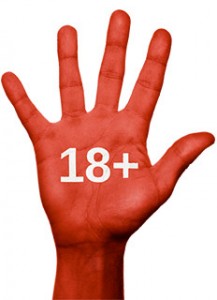 X-Rated not in nature but in age. Botulinum toxin type A, more commonly referred to as Botox® is actually only licensed for patients aged 18 and over. Here at Aurora Skin Clinics, we would certainly find it unethical to even consider treating anyone under 18, and would never treat anyone unless there was a clinical need. We don’t treat anyone without a full and thorough consultation.
X-Rated not in nature but in age. Botulinum toxin type A, more commonly referred to as Botox® is actually only licensed for patients aged 18 and over. Here at Aurora Skin Clinics, we would certainly find it unethical to even consider treating anyone under 18, and would never treat anyone unless there was a clinical need. We don’t treat anyone without a full and thorough consultation.
Your face is unique
Everyone’s face is unique meaning treatment for everyone is different. For example; if you have a weak frown then less Botoxwould be used compared to someone with a stronger frown with larger muscles who would require more Botox. It is important to always have a consultation before any injectable appointment so your face can be looked at and a course of treatment which is suitable for you can be decided on.
Zinc supplement
Our final letter on the A-Z of Botox. According to a small study carried out by researchers in the USA, it was found that taking a Zinc supplement could make the effects of Botox® injections last approximately 30% longer. The official supplement is actually known as ‘Zytaze’, and is a combination of zinc and the enzyme phytase. Zinc is thought to be necessary in order for Botox® to act as a neurotoxin. And phytase is an enzyme that helps to slow down the breakdown of zinc in the body. So combining the two into one pill effectively boosts the neurotoxic effects of Botox® on the muscles in the face. Further studies will be required to test the safety and efficacy of Zytaze. But the early signs for the supplement as a beauty booster look promising.
To find out more about our Botox and Filler Courses, or if you would like to become a model with Cosmetic Courses for this treatment, please call the team on 01844 390110 or fill in our quick consent form.




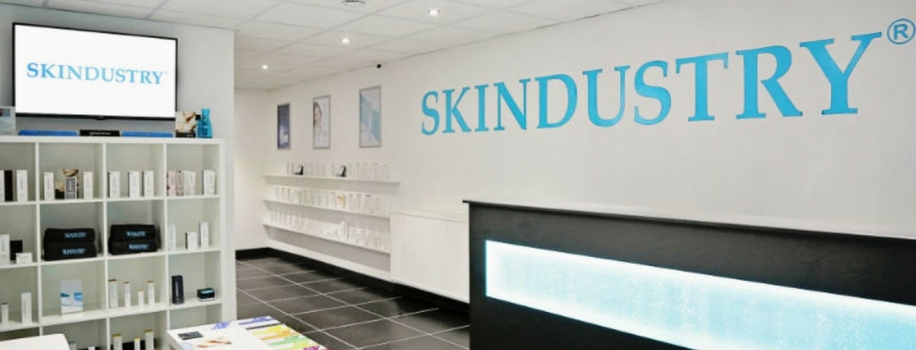
 treating with in their clinic, showing that it is not just woman that are interested in anti-ageing treatments. This could be due to more male celebrities admitting to having treatments, such as Peter Andre and Shane Warne having a little ‘Brotox’ here and there.
treating with in their clinic, showing that it is not just woman that are interested in anti-ageing treatments. This could be due to more male celebrities admitting to having treatments, such as Peter Andre and Shane Warne having a little ‘Brotox’ here and there.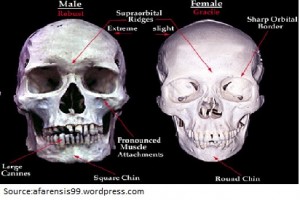 This is one of the most important areas for rejuvenation, but there are noticeable differences between the sexes. Anthropologists use the forehead as an indicator to determine the sex of the skull. It has been observed that a female skull has more of a flat supraorbital ridge, with a smooth convexity up to the hairline, whereas the male skull has a more pronounced supraorbital ridge with some concavity before the forehead becomes flatter towards the hairline. This skeletal structure is what influences the soft tissues and the overall position of the eyebrows.
This is one of the most important areas for rejuvenation, but there are noticeable differences between the sexes. Anthropologists use the forehead as an indicator to determine the sex of the skull. It has been observed that a female skull has more of a flat supraorbital ridge, with a smooth convexity up to the hairline, whereas the male skull has a more pronounced supraorbital ridge with some concavity before the forehead becomes flatter towards the hairline. This skeletal structure is what influences the soft tissues and the overall position of the eyebrows. This is an area that is extensively covered in female rejuvenation, but it does come with limited descriptions when it comes to males. Females have a rounder and fuller cheek due to having a thicker fat compartment in the medial area compared to the lateral area. In regards to female ageing, a fuller cheek gives a more youthful look, referring back to the triangle of youth – everything is more pert and smoother. Male cheeks tend to be flatter and more angular due to a thinner layer of subcutaneous fat. The technique used to treat this area have slight differences, and the volume of product used needs to vary. To keep the ‘flatter’ cheek look for male patients, product should only be used to replace the volume loss. Females can have slightly more product used, and this can be replaced more often to maintain the fuller cheek look.
This is an area that is extensively covered in female rejuvenation, but it does come with limited descriptions when it comes to males. Females have a rounder and fuller cheek due to having a thicker fat compartment in the medial area compared to the lateral area. In regards to female ageing, a fuller cheek gives a more youthful look, referring back to the triangle of youth – everything is more pert and smoother. Male cheeks tend to be flatter and more angular due to a thinner layer of subcutaneous fat. The technique used to treat this area have slight differences, and the volume of product used needs to vary. To keep the ‘flatter’ cheek look for male patients, product should only be used to replace the volume loss. Females can have slightly more product used, and this can be replaced more often to maintain the fuller cheek look.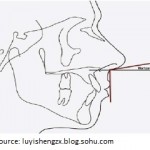 There are more subtle differences between the sexes in this area. There are 2 angles that are used to determine the ideal nose shape: Naso-labial Angle and Naso-frontal angle.
There are more subtle differences between the sexes in this area. There are 2 angles that are used to determine the ideal nose shape: Naso-labial Angle and Naso-frontal angle.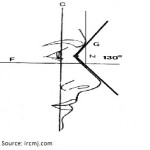 Naso Frontal is the angle at the radix, the lowest point of the nasal bridge formed by a line running from the radix to the glabella and from the radix along the dorsum of the nose. This position of the radix is important between males and females. Females are normally in line with the lash line whereas males are at the level of the tarsal fold.
Naso Frontal is the angle at the radix, the lowest point of the nasal bridge formed by a line running from the radix to the glabella and from the radix along the dorsum of the nose. This position of the radix is important between males and females. Females are normally in line with the lash line whereas males are at the level of the tarsal fold.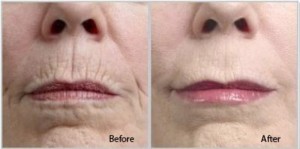 When treating both the female and male face for any aesthetic treatment, it is important to book them in for a full consultation, to undertake a facial analysis. Within this consultation, grade the upper, mid and lower face in terms of structure, proportion and symmetry. Within our training, we advise that you take photos of all your patients and keep these as a record to show before and after treatment– it also helps to show the patient how far they have come on their treatments with you.
When treating both the female and male face for any aesthetic treatment, it is important to book them in for a full consultation, to undertake a facial analysis. Within this consultation, grade the upper, mid and lower face in terms of structure, proportion and symmetry. Within our training, we advise that you take photos of all your patients and keep these as a record to show before and after treatment– it also helps to show the patient how far they have come on their treatments with you.
 Consultations before Botox® are essential. Everyone’s face is different so what your sister’s best friend got is going to be different to what is suitable for you. Once you arrive at your consultation you will meet your practitioner and you will be able to discuss areas of concern to you. Your practitioner will also go through the possible complications of botox the common of these include swelling, bruising, headaches, and redness at injection site, everything will be discussed in detail and you will also be able to ask any questions before deciding to go ahead or not.
Consultations before Botox® are essential. Everyone’s face is different so what your sister’s best friend got is going to be different to what is suitable for you. Once you arrive at your consultation you will meet your practitioner and you will be able to discuss areas of concern to you. Your practitioner will also go through the possible complications of botox the common of these include swelling, bruising, headaches, and redness at injection site, everything will be discussed in detail and you will also be able to ask any questions before deciding to go ahead or not. Botox® in the UK is classed a prescription only medicine which means it can only officially be prescribed by a doctor, dentist or independent nurse prescriber. The prescriber will take liability for the administration of the drug under their supervision. The liability for patient safety rests with the prescriber. Always ask to see a GMC, (General Medical Council) NMC (Nursing and Midwifery Council) or GDC (General Dental Council) registration before letting your practitioner start botox treatment.
Botox® in the UK is classed a prescription only medicine which means it can only officially be prescribed by a doctor, dentist or independent nurse prescriber. The prescriber will take liability for the administration of the drug under their supervision. The liability for patient safety rests with the prescriber. Always ask to see a GMC, (General Medical Council) NMC (Nursing and Midwifery Council) or GDC (General Dental Council) registration before letting your practitioner start botox treatment. X-Rated not in nature but in age. Botulinum toxin type A, more commonly referred to as Botox® is actually only licensed for patients aged 18 and over. Here at Aurora Skin Clinics, we would certainly find it unethical to even consider treating anyone under 18, and would never treat anyone unless there was a clinical need. We don’t treat anyone without a full and thorough consultation.
X-Rated not in nature but in age. Botulinum toxin type A, more commonly referred to as Botox® is actually only licensed for patients aged 18 and over. Here at Aurora Skin Clinics, we would certainly find it unethical to even consider treating anyone under 18, and would never treat anyone unless there was a clinical need. We don’t treat anyone without a full and thorough consultation.
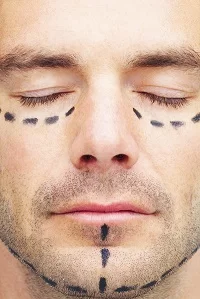 that male clients made up 9% of the total number of those undergoing cosmetic surgery operations in the UK. These numbers have nearly doubled over the past decade (from 2,440 procedures in 2005 to 4,614 in 2015). However, treatments for men tend to be less invasive than for female clients.
that male clients made up 9% of the total number of those undergoing cosmetic surgery operations in the UK. These numbers have nearly doubled over the past decade (from 2,440 procedures in 2005 to 4,614 in 2015). However, treatments for men tend to be less invasive than for female clients.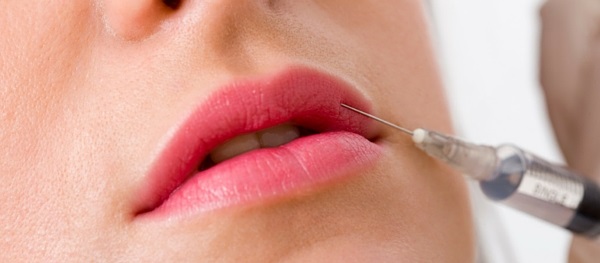
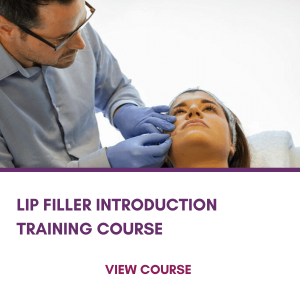
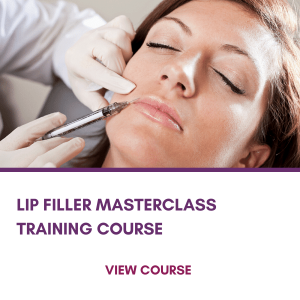




 As a beauty therapist, you’ve worked hard to gain your qualifications and build up your client base, and are proud of what you’ve achieved so far.
As a beauty therapist, you’ve worked hard to gain your qualifications and build up your client base, and are proud of what you’ve achieved so far.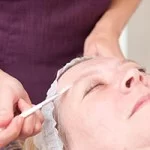 Chemical Skin Peels are a popular treatment for anti-ageing, treating specific skin complaints, and improving the general condition of the skin.
Chemical Skin Peels are a popular treatment for anti-ageing, treating specific skin complaints, and improving the general condition of the skin. Training in Genuine Dermaroller will allow you to treat stretch marks, chicken pox, acne and other depressed scars, as well as improving sun damage, fine lines, uneven skin tone and the general texture and tone of the skin.
Training in Genuine Dermaroller will allow you to treat stretch marks, chicken pox, acne and other depressed scars, as well as improving sun damage, fine lines, uneven skin tone and the general texture and tone of the skin.